Moisture sweeps in from the Pacific Ocean, tumbling down as rain or snow on the western slopes of the Olympic Mountains on Washington’s Olympic Peninsula. Heavy clouds spill 12 to 14 feet of rain each year in the Hoh Rain Forest as they drift northeast before wringing another 18 to 20 inches over the San Juan Islands. Combining this weather pattern with the unique topography of the archipelago and a perfect climate exists for the Brittle Prickly Pear cactus to inhabit San Juan Island, Yellow Island, and the Cactus Islands.
One of three cacti in the state, the Brittle Prickly Pear is the only cactus native to Western Washington. Besides the San Juan Islands and Canadian Gulf Islands, it is found on Whidbey Island, north and east of Sequim, and near Port Townsend—all locations within the Olympic rain shadow. Several places are former Native American encampments where the cacti were cultivated after being acquired by trade from Eastern Washington Indians. It is believed the juice of the cacti may have been used as a fixing agent for natural dyes.
Photo Credit: Wikimedia Commons
The Brittle Prickly Pear cacti (Opuntia fragilis) form broad, low mats and grow to a height of six inches. The round, dark green pads break easily at the joints and have barbed spines, their color varying from ivory-to-red according to the time of year. In June, the yellow flowers bloom and are reminiscent of wild roses. Preferring to grow on sunny, dry south or southwest facing slopes, the cacti like gravelly or sandy soil in isolated areas where competition from other plants is minimal.
Photo Credit: Wikimedia Commons
The Cactus Islands appear to be first named on British Admiralty Chart #2689 in 1858 or 1859. In the photo below, Spieden Island is flanked by The Nature Conservancy‘s Sentinel Island (south) and the Cactus Islands (north) which are privately owned. Adjacent rocks and reefs are part of the San Juan Islands National Wildlife Refuge. Boaters use both channels, each with strong currents, but I prefer to sail through New Channel next to the Cactus Islands where you can see more wildlife.
Photo Credit: U.S. Geological Survey
Thank you for reading!
Blessings,
Deb

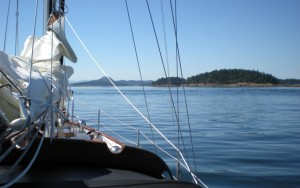
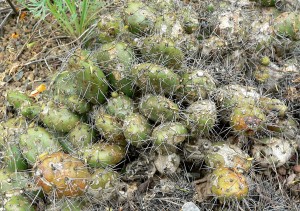
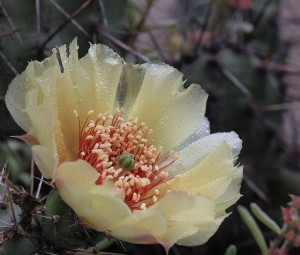
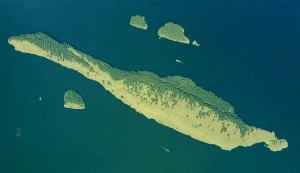
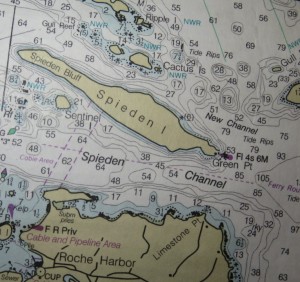
Beautifully written and interesting post, Deb. I never knew there were cacti in Washington! Love your photos, as always.
Cacti live in the strangest places! I grew up in Washington and didn’t discover this fact until I saw the Cactus Islands named on a nautical chart. Thanks, Peggy!
Thanks for the fun and informative cacti post. Opuntia fragilis is easy to cultivate in a sunny garden, somewhat more interesting than most more common native plants.
You’re welcome. It’s great to hear these cacti can be grown in sunny gardens too.